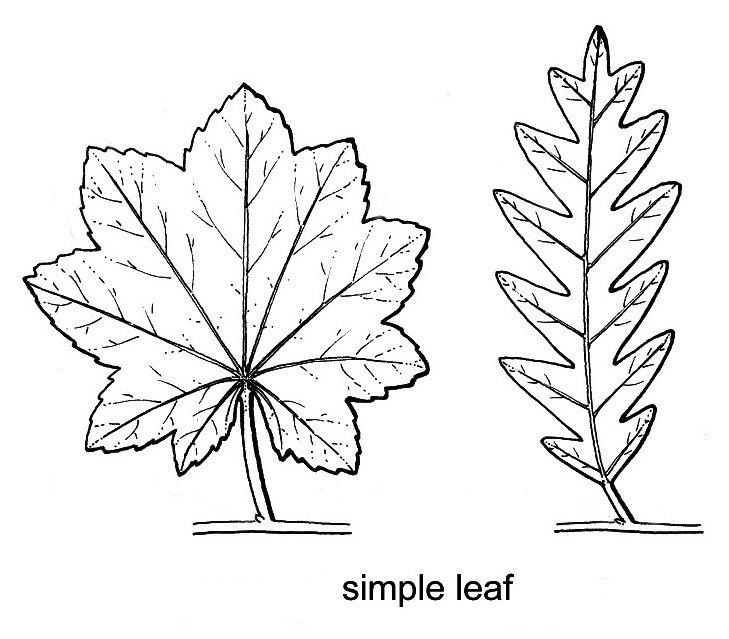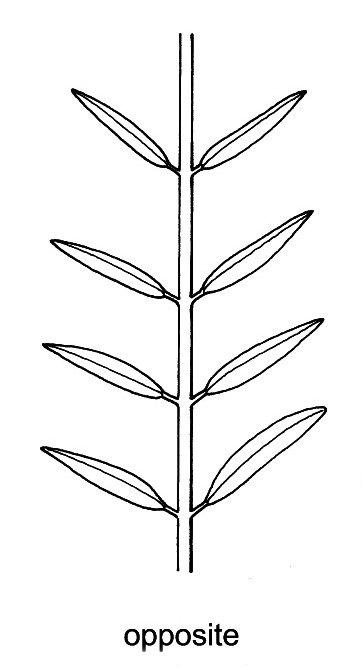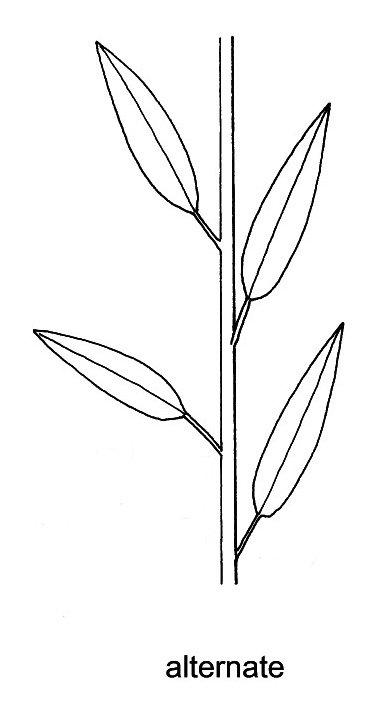|
|
 |
Key to RanunculaceaeView taxon page for Ranunculaceae
Jepson Manual glossary definitions can be seen by moving your cursor over words underlined with dots. 1. Flower bilateral  Divisible into mirror-image halves in only one way. ; sepals petal-like, not alike, uppermost spurred or hooded, generally > others 2. Uppermost sepal hooded, not spurred, enclosing petals, stamens ..... ACONITUM 2' Uppermost sepal spurred, ± flat or curved but not hooded, generally not enclosing petals, stamens 3' Perennial herb, generally from ± fibrous  1. Pertaining to structures that are composed at least in part of more or less thread-like but usually tough elements (e.g., Yucca leaves). 2. Pertaining to a root system composed of many roots similar in length and thickness (e.g., grass roots). or fleshy roots; petals 4, free; pistils 3(5) ..... DELPHINIUM 1' Flower radial  Divisible into mirror-image halves in three or more ways. ; sepals petal-like or not, ± alike 4. Sepal spurs present, petal spurs 0; plant generally tufted; leaves basal  At or near the base of a plant or plant part. Especially said of leaves clustered near the ground or of a placenta confined to the base of an ovary. , simple  Composed of a single part; undivided; unbranched. , linear  Elongate, with nearly parallel sides; narrower than elliptic or oblong. ..... MYOSURUS 4' Sepal spurs 0, petal spurs occasional; plant not tufted; leaves generally basal and cauline, generally dissected or compound (or basal, simple, lanceolate  Narrowly elongate, widest in the basal half, often tapered to an acute tip. to reniform) 5' Pistils (1)2–many; fruit achene  Dry, indehiscent, 1-seeded fruit from a 1-chambered ovary, sometimes winged, often appearing to be a naked seed. A 1-seeded dry fruit derived from an inferior ovary of > 1 carpel (e.g., Asteraceae, Dipsacaceae) is sometimes called a cypsela. or follicle (± utricle  Mostly dry, dehiscent or indehiscent fruit from a generally compound pistil in which a balloon- or bladder-like ovary wall loosely encloses (or, in some Amaranthaceae, is adherent to) a single seed. in Trautvetteria) 6. Ovules >= 2 per ovary; fruit follicle 7' Petals 0 or not spurred 9. Plant from slender rhizomes or stolons, scapose  Pertaining to a plant or an inflorescence in which a relatively long peduncle (scape) arises, sometimes with leaf- or scale-like bracts but without true foliage leaves, from a rosette or other arrangement of leaves at ground level. ; sepals 5–8, linear; petals 5–7 ..... COPTIS 9' Plant from clustered, slender to fusiform  Elongate, widest at the middle, tapered to both ends. or ± spheric fleshy roots, not scapose; sepals generally 5, oblong  Longer than wide, with nearly parallel sides; wider than linear. to obovate; petals 0 ..... ENEMION 6' Ovule 1 per ovary; fruit achene (± utricle in Trautvetteria) 10. Cauline leaves generally opposite  1. Arranged in pairs along an axis - e.g., two leaves per node. 2. Occurring in the same rank, directly above or below, as 'stamens opposite petals'. 3. Located directly across from. or 0 but involucre  Group of bracts more or less held together as a unit, subtending a flower, fruit (acorn cup), or inflorescence. bracts leaf-like, generally in 1–2 whorls of 2–5 11. Plant perennial  Completing life cycle (germination through death) in more than two years or growing seasons, generally non-woody (at least above ground) to woody; includes perennial herbs as well as subshrubs to trees; the abbreviation 'per' only refers to perennial herb, not to the word 'perennial' alone. herb, not vine; basal leaves present, cauline 0 but involucre bracts leaf-like, generally in 1–2 whorls of 2–5; inflorescence terminal; sepals 5–10 ..... ANEMONE 11' Plant ± woody vine; basal leaves 0, cauline generally many, opposite; inflorescence axillary  Pertaining to or within an axil, especially a leaf axil. ; sepals generally 4 ..... CLEMATIS 10' Cauline leaves alternate  1. Arranged singly, often spirally, along an axis - e.g., one leaf per node. 2. Occurring in different ranks, appearing to be between, not directly above or below, as 'stamens alternate petals'. or 0 12. Perianth parts in 2 whorls; sepals generally green to ± yellow, not petal-like; petals 3–many, yellow to orange, occasionally white or purple 13. Anthers ± purple; petals yellow to orange, base ± purple, nectaries 0 ..... ADONIS 13' Anthers yellow; petals generally yellow, occasionally white or purple, nectaries near base ..... RANUNCULUS 12' Perianth parts in ± 1 whorl (inner << outer, gland-like in Ranunculus hystriculus); sepals generally green to white or ± purple, petal-like or not; petals generally 0 14. Leaf compound, leaflets entire  Having margins that are continuous and smooth (i.e., without teeth, lobes, etc.). , crenate  Pertaining to margins with shallow, rounded teeth, between which are usually acute sinuses (i.e., scalloped) , or lobed; flower unisexual or bisexual  Both male and female reproductive parts occurring and functional in the same plant or structure (e.g., flower, spikelet, inflorescence). ..... THALICTRUM 14' Leaf simple, crenate to deeply lobed; flower bisexual 15. Leaf crenate to palmately lobed, lobes  1. A major expansion or bulge, such as on the margin of a leaf, sepal, or petal, or on the surface of an ovary. 2. The free tips of otherwise fused structures, such as sepals or petals; larger than teeth. rounded to obtuse  Having a short-tapered, blunt tip or base, the sides convex or straight and converging at more than a right angle. , entire to toothed or lobed; inflorescence scapose, flowers 1(3); sepals 6–13 mm, blade  Expanded portion of a leaf, petal, or other structure, generally flat but sometimes rolled, cylindric, wavy, or cupped. ± flat; petals 2–4 mm, gland-like ..... Ranunculus hystriculus 15' Leaf deeply palmately lobed, lobes ± wedge-shaped, toothed distally; inflorescence not scapose, flowers >= 5 in terminal panicle  1. In flowering plants excluding Asteraceae, Cyperaceae, Poaceae, and some other groups, a branched inflorescence in which the basal or lateral flowers (or some of them) open before the terminal or central flowers on any axis. 2. In Asteraceae, Cyperaceae, Poaceae, and some other groups, a panicle-like inflorescence is one in which at least some of the inflorescence units (e.g., heads in Asteraceae; spikelets in Cyperaceae and Poaceae), instead of individual flowers, are attached (stalked or unstalked) to branches and not directly to the main axis of the inflorescence and in which floral development may or may not proceed as in 1. ; sepals 2.5–6 mm, blade cup-like; petals 0 ..... TRAUTVETTERIA
Please use this Google Form for Contact/Feedback
Citation for the whole project: Jepson Flora Project (eds.) . Jepson eFlora, https://ucjeps.berkeley.edu/eflora/ [accessed on ]
Citation for an individual treatment: [Author of taxon treatment] [year]. [Taxon name] in Jepson Flora Project (eds.) Jepson eFlora, [URL for treatment]. Accessed on .
We encourage links to these pages, but the content may not be downloaded for reposting, repackaging, redistributing, or sale in any form, without written permission from The Jepson Herbarium.
|
|
 |

